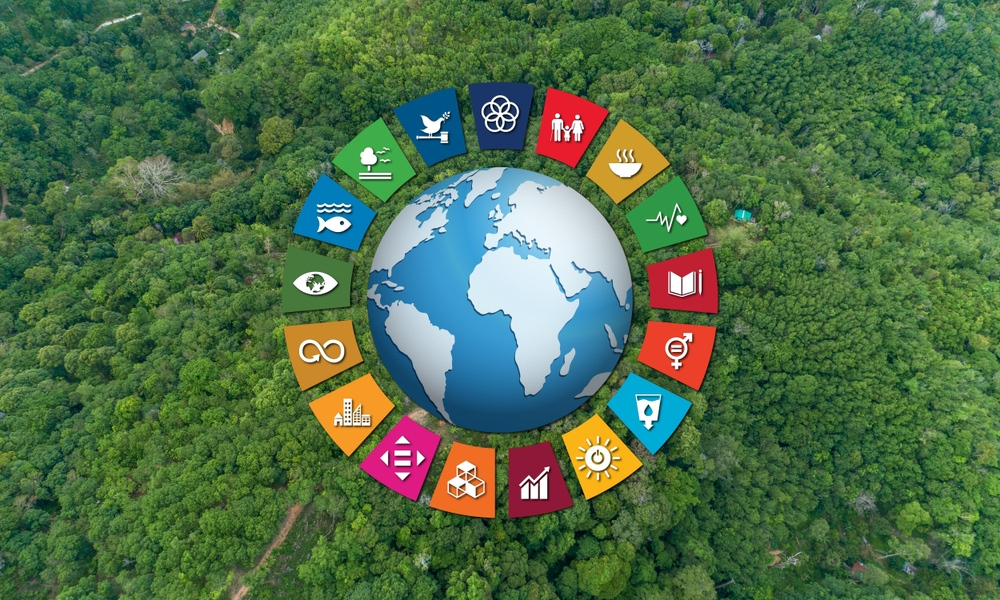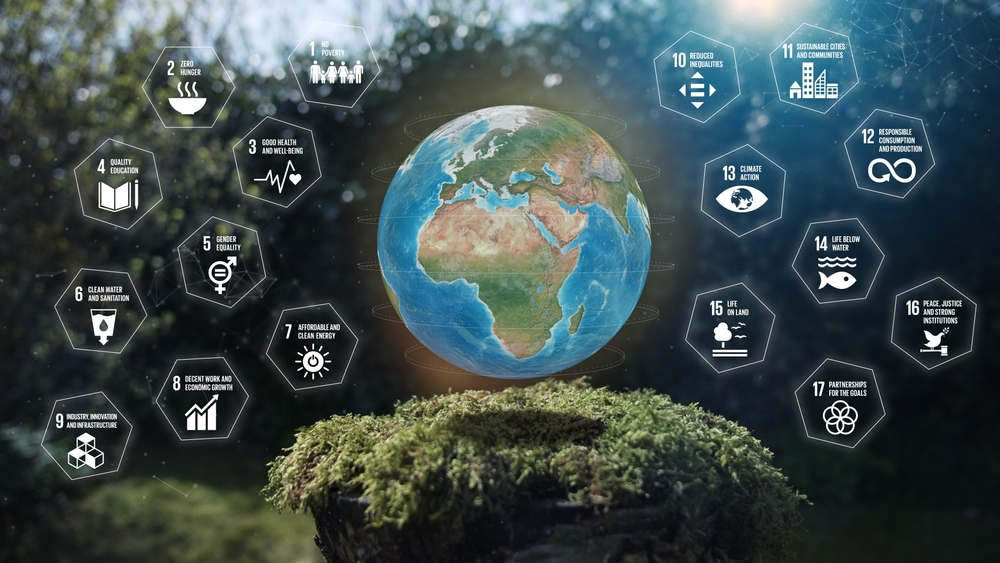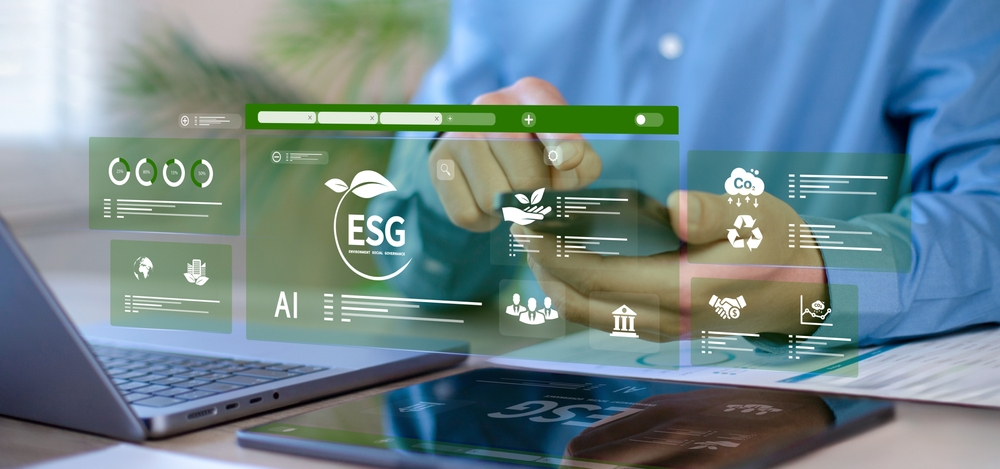Insights

21/10/2025
The UN Global Compact Network UK's comprehensive new report, Trailblazers & Transformers reveals a pattern across UK business that demands attention: companies are improving their sustainability performance significantly, yet they excel at either environmental SDGs or social SDGs – rarely both.
This isn't about capability. The report's analysis of over 900 UK companies demonstrates that businesses possess the expertise needed for sustainability. What's emerging is something more fundamental: a cognitive and systemic challenge. We're asking teams to deliver 30-year environmental legacies while organizing them around 3-year project cycles, 5 year political policy cycles and often 12-month shareholder interests.
The question isn't whether businesses should act. It's whether we can afford to keep progressing in parallel when integration is what actually delivers sustainable development.

The UK Pattern: Strong on People, Weak on Planet
UK businesses show a distinct pattern. The UN analysis found relatively strong performance on social-focused SDGs – decent work, equality, governance – but significant gaps on environmental goals, particularly waste and resource use (SDG 12), water stewardship (SDG 6), biodiversity (SDG 14, 15), and Scope 3 emissions (SDG 13).
For infrastructure projects, this creates particular risk. Social engagement may be strong while environmental integration lags, undermining the very resilience these projects need to deliver over decades.
Energy firms lead on decarbonisation while building social strategies. Financial services excel at governance while developing environmental capabilities. Across sectors, the pattern holds: excellence in isolation, not integration.
Beyond Either/Or: Discovering the And
When we mapped the work we are involved at The Advance Consultancy across projects and sectors (as we do each time we engage with a project) against the 17 SDGs during our B Corp certification journey, we expected to identify specific areas of strength (and weakness). What we discovered was more revealing.
The SDGs aren't competing priorities asking us to choose. They're interconnected systems inviting us to connect.
A transport project that reduces emissions while strengthening community connections achieves something fundamentally different from one that does either in isolation. A renewable energy scheme that accelerates clean power while enhancing local ecosystems doesn't just tick two boxes – it demonstrates how solutions can reinforce each other.
This connects directly to what we explored in our analysis of Biodiversity Net Gain – how focusing deeply on one sustainability challenge (BNG and SDG 15) reveals that breaking down functional silos is essential. The UN report confirms this pattern across all 17 SDGs. BNG isn't an isolated issue; it's a microcosm of the wider integration gap.
The question shifts from "Which SDGs should we prioritise?" to "How do these SDGs interact in our specific work?" That shift – from selection to connection – opens up entirely different possibilities.
The SDGs aren't competing priorities asking us to choose. They're interconnected systems inviting us to connect.
Three Shifts That Drive Integration
The report identifies clear patterns in organisations moving from fragmentation to integration:
1. Extending the Timeline: From Delivery to Legacy
Only 35% of UK companies currently assess SDG impact across full value chains, according to the UN study. Yet value chains are precisely where integration happens – where environmental decisions affect workers, social programmes impact local economies, and governance shapes environmental outcomes.
The shift is straightforward but profound: measuring success not just at project completion, but across the full lifecycle of impact. How infrastructure serves communities over decades. What carbon profiles look like over 50 years. Which ecosystems become more resilient over time. Who benefits across generations.
This expanded timeframe naturally surfaces connections. Short-term trade-offs reveal themselves as long-term opportunities. Community investment becomes asset creation. Climate resilience becomes foundational design. Biodiversity becomes strategic advantage.
2. Designing for Connection: From Sequential Approval to Integrated Conception
The report identifies this as the critical shift: traditional project approaches address sustainability domains sequentially – environmental impact assessment, then social value strategy, then economic appraisal, then governance review. Each rigorous in its own right, but rarely designed to reveal interactions.
Integration emerges when different domains inform each other from the beginning. When climate specialists and community engagement teams co-design together, solutions emerge that neither would develop independently. Decarbonisation strategies that create skills pathways. Transport systems that enhance ecological corridors while improving access to opportunity. Housing developments that improve water quality while building social infrastructure.
The organisations progressing fastest treat multi-domain thinking not as complication but as core methodology for uncovering compounding value.
3. Measuring Relationships: From Compliance to Connection
Currently, only 5% of companies assess their nature impacts, and fewer than 1% understand their dependencies, the report reveals. Integration demands we measure not just individual SDG performance but the relationships between them.
How does investment in education (SDG 4) strengthen employment outcomes (SDG 8)? How might water quality improvements (SDG 6) affect both health (SDG 3) and inequality (SDG 10)? How does climate action (SDG 13) either enable or constrain ecosystem restoration (SDG 15)?
Our Sustainability Impact Statement maps every project against all 17 SDGs because sustainability works through connection as much as through individual achievement. The relationships between outcomes matter as much as the outcomes themselves.
This isn't about claiming credit for indirect effects. It's about designing for them deliberately. And integrating collaboratively to drive outcome.

Why Complex Projects Are the Natural Place to Start
The report positions infrastructure and major projects as "ideal proving grounds" for SDG integration. They're already multi-disciplinary. Already long-term. Already balancing environmental, social, and economic considerations.
Project teams already bring together engineers, ecologists, community specialists, and commercial expertise. The challenge isn't building collaborative capability on single issues – increasingly, organisations are getting better at that. The opportunity is connecting those capabilities across multiple sustainability domains to unlock compounding value.
You're already managing complexity. Already coordinating diverse specialists. Already thinking long-term. The question is whether you're integrating these sustainability elements by design or managing them as separate workstreams that occasionally intersect.
The Integration Imperative
We're four years from 2030. The UN research indicates significant room for development in how we understand sustainability as systemic rather than sectoral.
The organisations moving earliest from isolated to integrated approaches are discovering something valuable: integration doesn't just improve sustainability performance. It reveals opportunities that domain-focused thinking obscures.
Three questions that help organisations make this shift:
- How do our environmental decisions affect social outcomes, and how do social decisions affect environmental outcomes?
- Where do the SDGs we're addressing interconnect in our specific context – and what does deliberately designing for those connections reveal?
- Are we measuring both individual outcomes and the relationships between them?
Our B Corp journey reinforced something we'd sensed but hadn't fully articulated: the work we're most proud of has always been integrated. When projects succeed across environmental, social, and economic dimensions simultaneously, they don't just meet standards. They demonstrate what's possible when we design for connection rather than addition.
Looking Forward
The shift from isolated progress to connected impact represents one of the more interesting challenges facing organisations committed to genuine sustainability. It's not about working harder on individual SDGs. It's about understanding how they compound when deliberately connected.
The collaborative capabilities exist – many organisations are already demonstrating them on specific sustainability challenges. The frameworks for connection are emerging. The question is less whether to integrate than how quickly the opportunity gets recognised and acted upon.
Integration doesn't happen by accident. It requires deliberate design, patient relationship-building, and measurement approaches that value connections as much as outcomes. But as the UN report concludes: integration doesn't dilute focus – it multiplies impact.
The conversation about SDG integration is evolving rapidly. Whether you're exploring what integrated sustainability might mean for your organisation or already testing approaches, we're interested in engaging with you in that dialogue – the key to success is integration through Professional Collaboration.

Insights
The Professional Collaboration Series: Blog 4 of 8: The Licence Problem, Part 1: Why Structure Determines Who Can Challenge Whom

Insights
The Professional Collaboration Series: Blog 3 of 8: The Courage Deficit: Why Knowing What to Say Isn't Enough

Insights
The Professional Collaboration Series: Blog 2 of 8: The Three Dimensions That Make Disagreement Work (or Fail)

Insights
The Professional Collaboration Series: Blog 1 of 8: The Three Hidden Reasons Disagreement Fails in Complex Environments

Insights
Community Rail Conference: A Celebration of Collaboration and Passion

Insights
Building Foundations: Advance's Canadian Infrastructure Journey Takes Shape

Insights
Mental Health Doesn’t Take a Day Off – and Neither Should We

Insights
Why Big Infrastructure Projects Are Struggling with Biodiversity Net Gain (And How Better Collaboration Could Change Everything)

Insights
What I Hope to Bring to the Advance Party

Insights
The Deeper Story Behind Our Numbers

Insights
Advance Joins SME Alliance Partners on UK Government’s CCS Management Consultancy Framework Four (MCF4)

Insights
From Ashes to Grid: How Power Maxed Racing Redefined What's Possible in Five Days

Insights
The skills revolution is here. Are we ready for what comes next?

Insights
Beyond “That’s Really Good”

Insights
What the UK’s Infrastructure challenges reveal about strategic leadership

Insights
A new way to map your leadership team.

Insights
Building ‘What If?’ Cultures

Insights
The problem with 'nice' teams...

Insights
You don’t become a leader when you get a job title.

Insights
Kindness > Capability (And here’s the data to prove it)

Insights
What no one’s telling high performers about burnout…

Insights
The question you should be asking…

Insights
Energy for Impact

Insights
Advance Consultancy Partners with Community Rail Network to Drive Sustainable Development

Insights
Are you Keane on Teamwork?

Insights
Real People, Real Impact: The Essence of Social Value

Insights
Advance's B Corp Journey to Certification

Insights
MVP or... MVP…

Insights
One Blog a Year (OK, maybe two..) like this will see me right

Insights
My First "6 Weeks" in Advance

Insights
One Blog a Year like this will see me right

Insights
Biting the Bullet

Insights
The Problem with Mergers …

Insights
The Start of Advance's Sustainability Journey

Insights
Skills for the Next Quarter Century

Insights
The Advance Reading List – Part 1

Insights
What has Colin the Caterpillar got to do with leadership development? (Learn2Develop - Part 2)

Insights
When Greta met Russell … becoming a reluctant leader

Insights
Trust & Productivity – the Private Sector Construction Playbook

Insights
What has Sustainability ever done for us?

Insights
We’re really not that clever…

Insights
Learn 2 Develop – Part 1 by Al Simmonite

Insights
What’s in a name? Moving from Respect-Challenge-Deliver to Challenge-Support-Evolve

Insights
A tough Week, or was it?

Insights
Paradoxes & The Advance Consultancy

Insights
The importance of heritage

Insights
DOs and DON’Ts of Returning to Work post Lockdown - A Leadership Perspective

Insights
Been there, done it… lost the T-shirt?

Insights